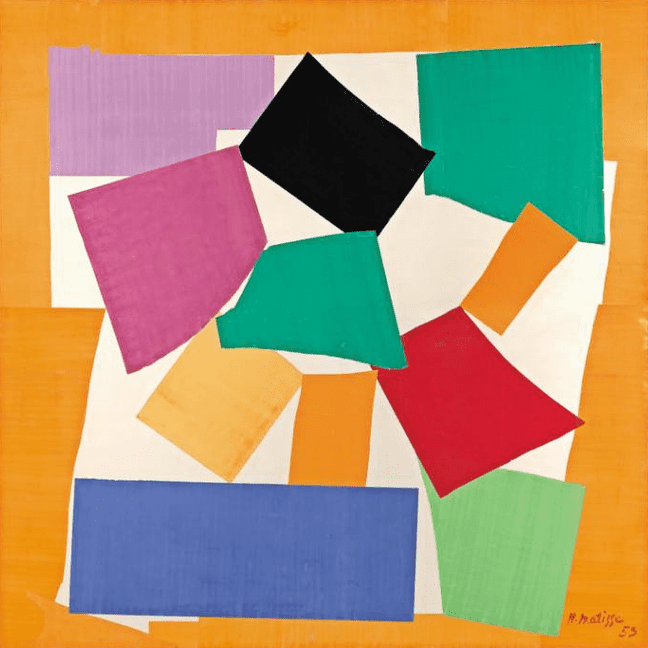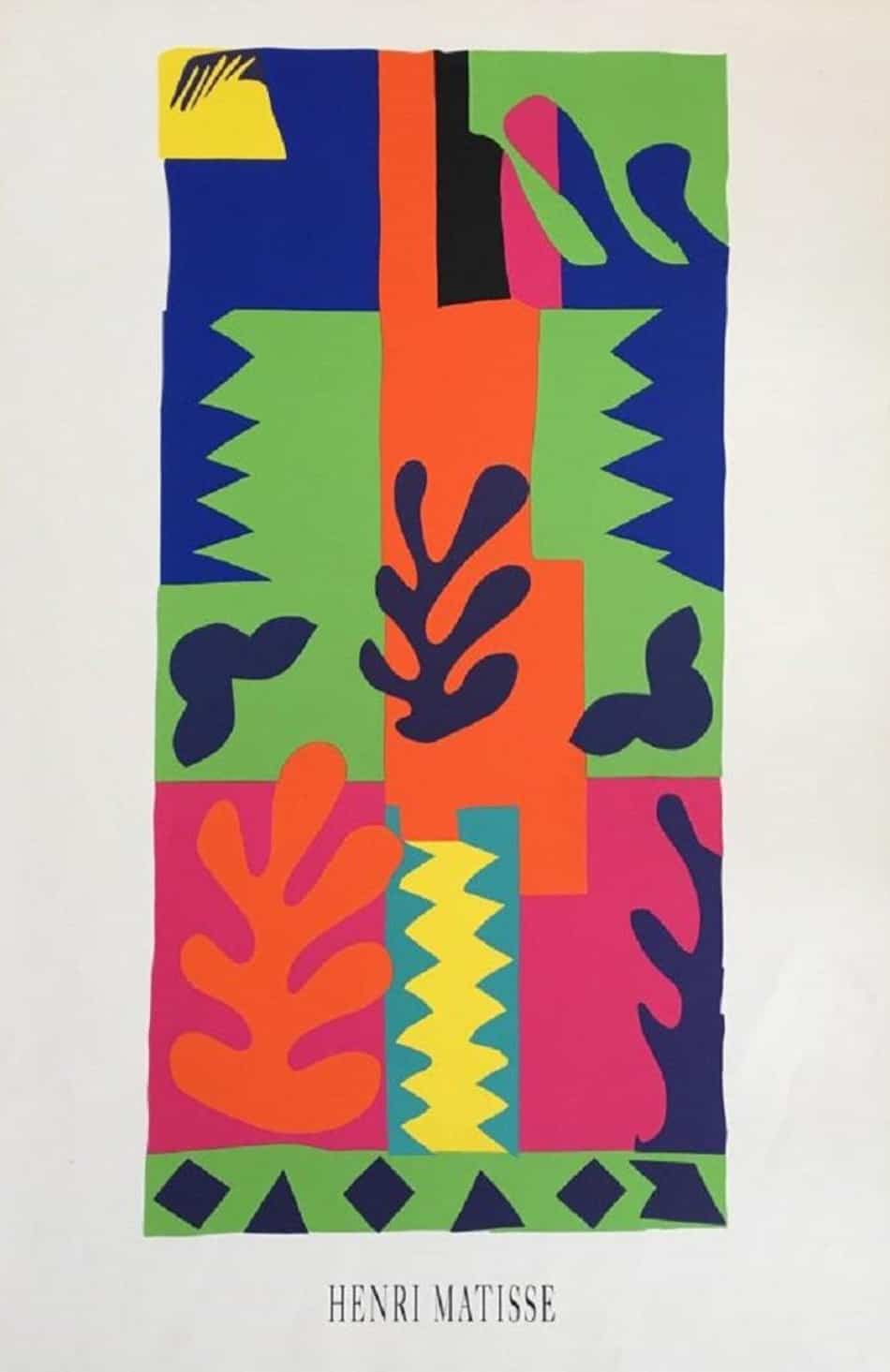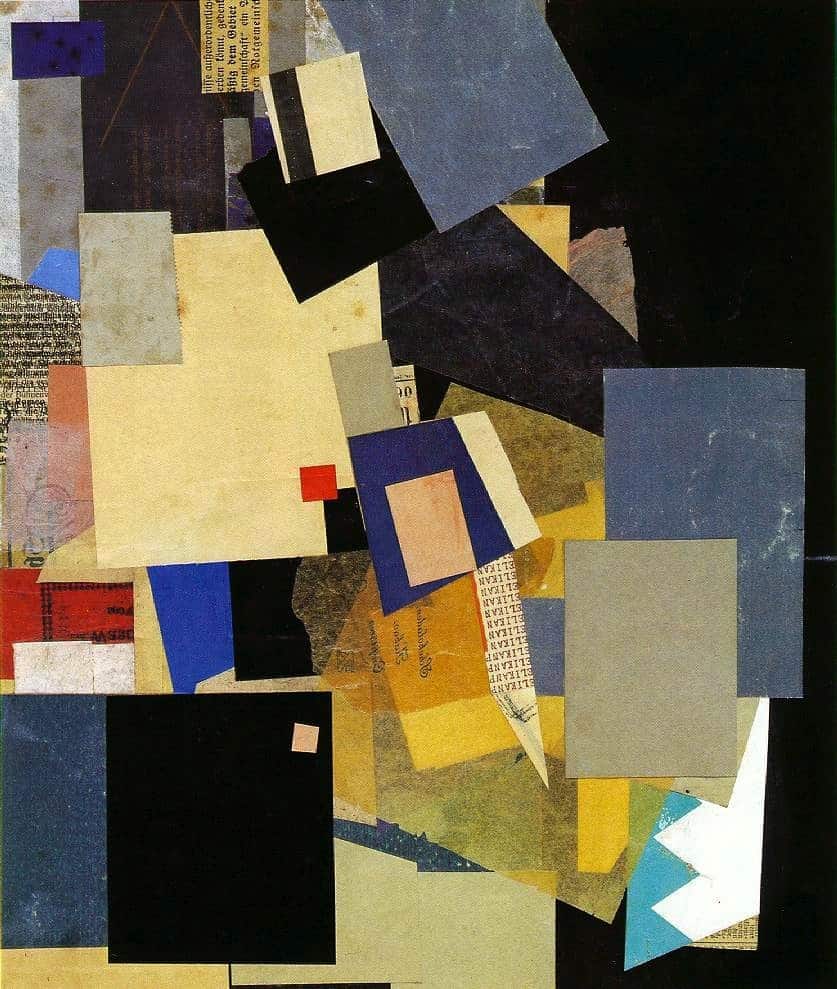Collage Continuum Series

Although the Bauhaus Series influences are still swirling around, I recently revisited a New York MOMA (treasured, now out of print) publication for the Retrospective on Henri Matisse, which nudged me to return to a favorite, and familiar expression of collage.
Matisse’s late work was as experimental and vibrant as his earlier artistic breakthroughs had been. It included his 1947 book Jazz, which placed his own thoughts on life and art side by side with lively images of colored paper cutouts. This project led him to devise works that were cutouts on their own, most notably several series of expressively shaped human figures cut from bright blue paper and pasted to wall-size background sheets (such as Swimming Pool, 1952).
Specifically, I have found the improvisation of recurring and potentially impermanent shapes/colors a refreshing complement to the less ‘commitment’ of drawn line. A subtle shadow of my Bauhaus Design Series lexicon can be found in this collage series, but they are also strongly influenced by the work of Alberto Buri, Henri Matisse, Picasso, the lesser known Kurt Schwitters, and countless others I’ve viewed and admired over the years.
Although the Bauhaus Series influences are still swirling around, I recently revisited a New York MOMA (treasured, now out of print) publication for the Retrospective on Henri Matisse, which nudged me to return to a favorite, and familiar expression of collage.

Matisse’s late work was as experimental and vibrant as his earlier artistic breakthroughs had been. It included his 1947 book Jazz, which placed his own thoughts on life and art side by side with lively images of colored paper cutouts. This project led him to devise works that were cutouts on their own, most notably several series of expressively shaped human figures cut from bright blue paper and pasted to wall-size background sheets (such as Swimming Pool, 1952).
Specifically, I have found the improvisation of recurring and potentially impermanent shapes/colors a refreshing complement to the less ‘commitment’ of drawn line. A subtle shadow of my Bauhaus Design Series lexicon can be found in this collage series, but they are also strongly influenced by the work of Alberto Buri, Henri Matisse, Picasso, the lesser known Kurt Schwitters, and countless others I’ve viewed and admired over the years.
Collage became an important landmark in the history of Cubism, & revolutionized Modern Art of the 20th century. Pablo Picasso & Georges Braque were among the first to use collage as a method for creating innovative art. They came up with the name “collage” from the French verb “coller” which means “to glue” or “to stick”.
It’s still unknown whether Braque or Picasso invented it. Both artists left a lot of collage works made between 1907 and 1914 which were not dated or signed.

Tate

MOMA
